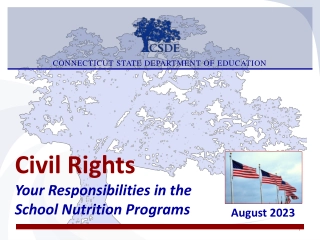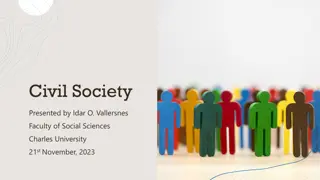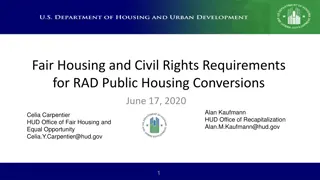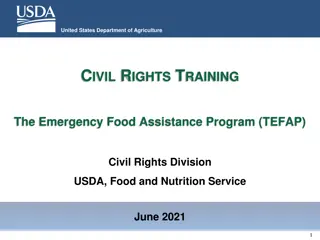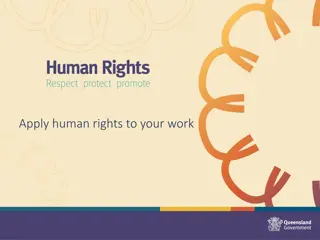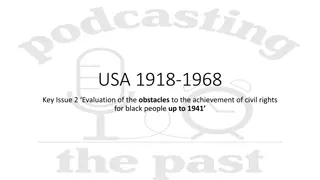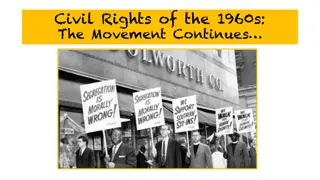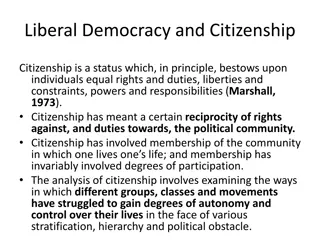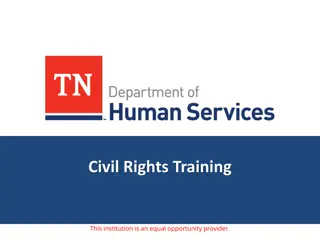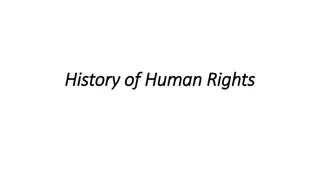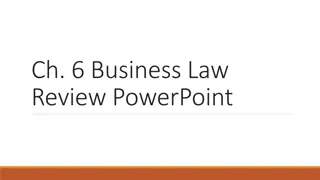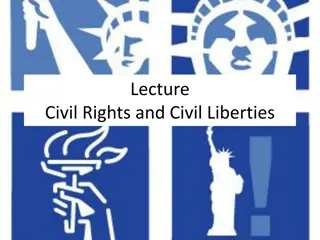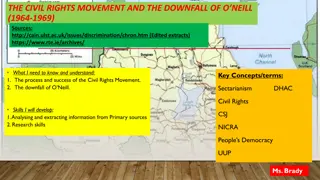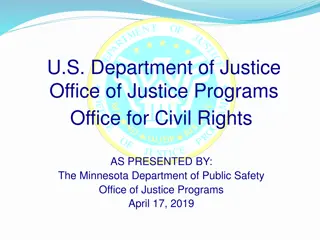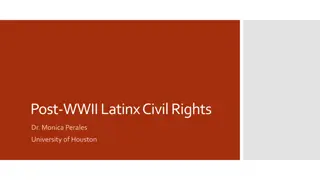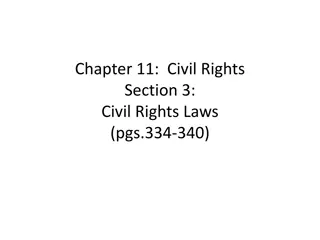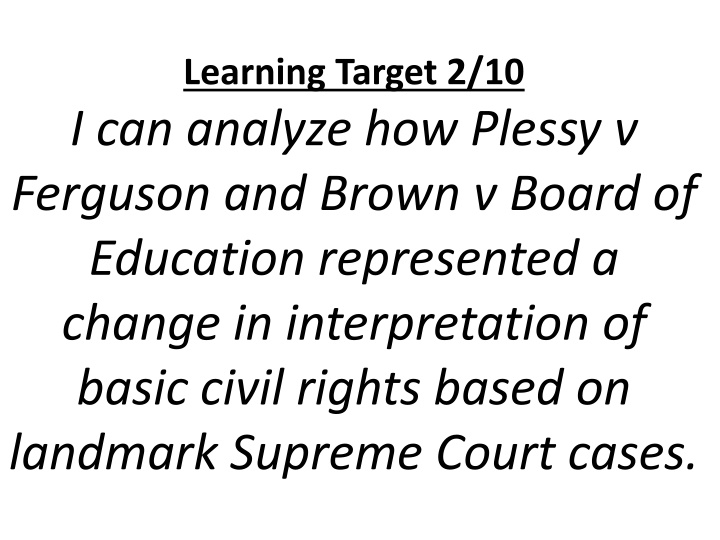
Interpreting Civil Rights Evolution: Plessy v. Ferguson & Brown v. Board of Education
Explore the pivotal Supreme Court cases of Plessy v. Ferguson and Brown v. Board of Education to understand the shifting interpretations of basic civil rights in American history. Analyze the impact on equality, segregation, and the evolution of legal principles.
Download Presentation

Please find below an Image/Link to download the presentation.
The content on the website is provided AS IS for your information and personal use only. It may not be sold, licensed, or shared on other websites without obtaining consent from the author. If you encounter any issues during the download, it is possible that the publisher has removed the file from their server.
You are allowed to download the files provided on this website for personal or commercial use, subject to the condition that they are used lawfully. All files are the property of their respective owners.
The content on the website is provided AS IS for your information and personal use only. It may not be sold, licensed, or shared on other websites without obtaining consent from the author.
E N D
Presentation Transcript
Learning Target 2/10 I can analyze how Plessy v Ferguson and Brown v Board of Education represented a change in interpretation of basic civil rights based on landmark Supreme Court cases.
Warm up 1. Why is the struggle for equality ongoing? 2. What are some examples of progress toward equal rights experienced in the United States in the last 100 years?
Imagine that there is a new law that would only allow people with brown eyes to vote Share with a partner how you would feel about this law.
14th Amendment No State shall make or enforce any law which shall abridge the privileges or immunities of citizens of the United States; nor shall any State deprive any person of life, liberty, or property, without due process of law; nor deny to any person within its jurisdiction the equal protection of the laws.
Congress cannot make laws that violate the Constitution and the Amendments and if Congress did, the Supreme Court has the right of Judicial Review to decide if a law that violates the Constitution.
Question: If you were on the Supreme Court, how would you rule on the law allowing only people with brown eyes to vote using an interpretation of the 14th Amendment? Share with a partner
Plessy v Fergusson 1896 The issue in Plessy v Fergusson was whether segregation of public facilities (transportation) based on race violated the 14th Amendment
What was the ruling in Plessy v Fergusson? The High Court ruled that a Louisiana law requiring whites and blacks to ride in separate railroad cars did not violate the Equal Protection Clause of the 14th Amendment.
What was the impact of the ruling in Plessy v Fergusson? The Supreme Court decision to make separate but equal facilities the law of the land was the start of segregation.
Separate but Equal clause became synonymous with segregation
Individual Work Read Majority Ruling in Plessy v Fergusson and answer the questions ( 10 minutes )
Legislation is powerless to eradicate racial instincts or to abolish distinctions based upon physical differences.... If the civil and political right of both races be equal, one cannot be inferior to the other civilly or politically. If one race be inferior to the other socially, the Constitution of the United States cannot put them upon the same plane. Do you believe there can be a difference between political and social rights?
Very little progress had been made toward racial equality from the abolition of slavery by the 13th amendment [in the 1860s] until the 1950 s. [Almost 100 years!]. With a partner brainstorm ways of bringing about economic, social or political change.
Brown v Board of Education video clip 1. Were the actions of Linda Brown s family and Thurgood Marshall a form of protest? Why/Why not? 2. What was the issue in Brown v Board? 3. What did the ruling in Brown v Board say about separate but equal? 4. What was the impact of Brown v Board ruling?
Plessy of Brown? 1. The ruling in this case enforced segregation 2. Led to desegregation of public schools 3. As a result of this case segregation in the South began 4. Supreme Court ruled the state law violated the 14th amendment 5. Court ruled that law cannot enforce social equality 6. Ruled that segregation in schools is inherently unequal. 7. Separate but equal has no place in the constitution 8. Ruling stated that separate but equal was OK 9. Provided justification for segregation laws. 10. Blacks are equal politically but not socially
Complete evidence of learning The ruling in Plessy v Ferguson said that segregation did/didn t violate the 14thamendment and separate but equal was acceptable/not acceptable. Ruling in Brown v Board stated that segregation in public schools violated/did not violate the 14th amendment and separate but equal was/wasn t constitutional.
How would you characterize the nature of the protests by the Civil Rights movement? Why did the Civil Rights movement choose this kind of direct action? Why was it important to show the rest of America and the world the discrimination African Americans in the South were facing everyday? The reality of non violence being met with violence was shocking Explain and cite examples from the movie? The protests in Birmingham led to important Civil Rights legislation being passed How did this legislation bring about more equality for African Americans? In what other areas were African Americans still unequal? ( hint 13th, 14th, 15th am. )

